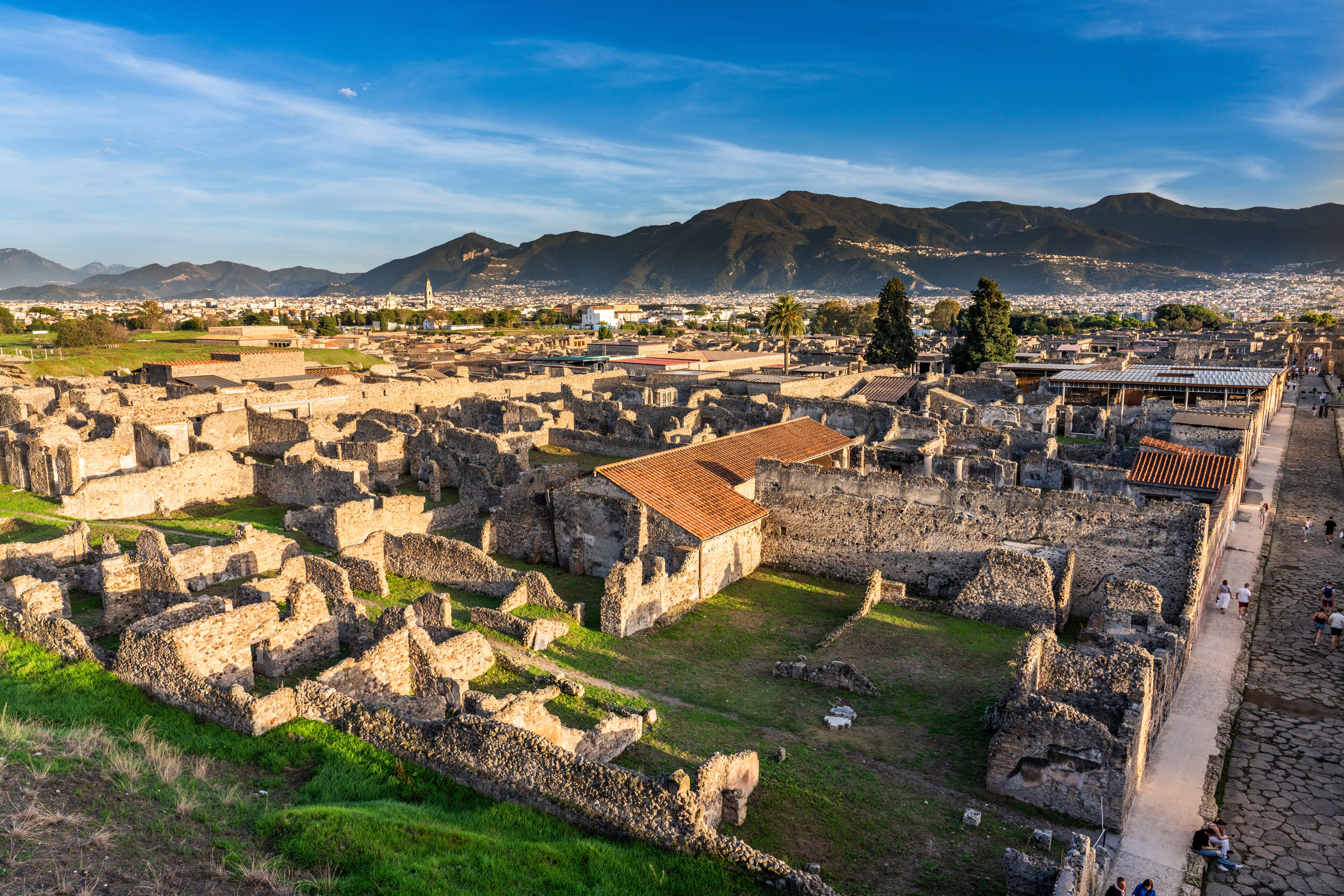House of Julius Polybius

The House of Julius Polybius is a grand residence with a history dating back to the 2nd century BC. Its owner, C. Iulius Polybius, was a prominent city official. The house features a beautifully painted façade in the First Style, with high doors and decorative frames. Inside, the peristyle is adorned with still-life paintings and masks on a white background.
The triclinium, used for dining, has a black coffered ceiling and walls covered in frescoes. One of these depicts the mythological scene of Dirce's torture. This room was once locked to protect valuable items, including bronze statues and antique vases.
Insula of the lover's chaste

The Insula of the Chaste Lovers is a block of several houses and a bakery. Excavations here started in 1912 and continued until 2010. At the time of the eruption, renovations were underway, likely due to earthquake damage. One notable house in this insula is the House of the Painters at Work.
Its walls feature preparatory sketches for frescoes, interrupted by the disaster. The name of the insula comes from a triclinium with paintings of banquets, including a romantic scene of two lovers. In the bakery, researchers found mule skeletons, used to turn millstones for grinding grain.
Thermopolium of Asellina

The Thermopolis of Asellina was a popular place for hot food and drinks. It is named after Asellina, a girl who worked there with her friends Aegle, Maria, and Zmyrina. Discovered in 1911, it still has many original furnishings. These include plates, goblets, jugs, and cups in terracotta, bronze, and glass.
The counter, decorated with red plaster and marble slabs, had large jars for storing food and drink. At the back, there was a brick oven with a bronze boiler. The site also revealed 22 wine amphorae.
-
Central Baths
The Central Baths is the largest bath complex in Pompeii, occupying an entire block of Region 9. They were under construction when the eruption occurred. The baths incorporate innovations from Roman architecture, such as those seen in the Baths of Nero. The main entrance is on Via di Nola, leading to the palaestra, or gym.
The bathing rooms, including the frigidarium, tepidarium, and calidarium, are arranged in sequence. Despite being unfinished, the complex shows signs of a grand design with ample light and ventilation. Unlike other bathhouses, there was no separation for men and women.
-
House of Obelius Firmus
The House of Obelius Firmus is one of Pompeii's largest and most complex houses. It spans almost an entire block and features two atria and a peristyle. The first atrium, with its tuff columns, is grand and adorned with elegant marble.
This house likely belonged to Marcus Obellius Firmus, a prominent political figure. Excavations uncovered a wooden strongbox and various ornamental tables and statues. The second atrium, surrounded by residential and service rooms, adds to the house's glory.
-
House of the Pygmies
The House of the Pygmies is named for its unique frescoes depicting pygmies along the Nile. Built around an atrium, it has living rooms opening to a central peristyle. The frescoes, dating to the second half of the 1st century AD, show scenes of the exotic Egyptian landscape.
Ducks, lotus plants, and wooden piers create a vivid image of life along the river. This house offers a glimpse into the cultural influences and artistic expressions of ancient Pompeii.
-
House of Marcus Lucretius in Via Stabiana
The House of Marcus Lucretius is unique due to its irregular layout, created by merging two separate homes. It features two atria set at right angles and high-quality frescoes of mythological scenes, some now in the National Museum of Naples. A small garden with an elegant marble fountain and a statue of Silenus adds charm. Excavations took place in 1846-1845, 1851, and 2002-2005.
House of Julius Polybius

The House of Julius Polybius is a grand residence with a history dating back to the 2nd century BC. Its owner, C. Iulius Polybius, was a prominent city official. The house features a bea